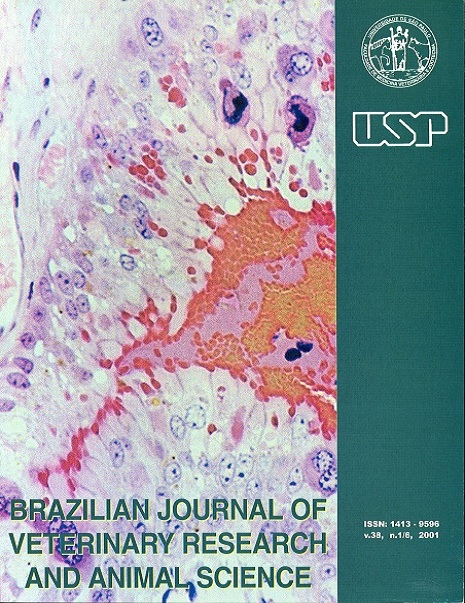Cryopreservation of mouse morulae through different methods: slow-freezing, vitrification and quick-freezing
DOI:
https://doi.org/10.1590/S1413-95962001000400003Keywords:
Cryopreservation, Embryo, MouseAbstract
The in vitro and in vivo development of mouse morulae after cryopreservation through different methods was examined. The slow-freezing involved an equilibration in 1.5M ethylene glycol (EG) and cooled at 0.5; 0.7; 1.0 or 1.2ºC/minute. The vitrification involved a 3 minutes equilibration in 20% EG and 60 seconds in solution containing 40% EG, 18% ficoll and 10.26% sucrose. The quick-freezing involved an equilibration in 3M EG + 0.3M sucrose for 5 minutes and 2 minutes in nitrogen vapor. In all three methods the straws were thawed in air for 10 seconds and in water at 25ºC for 20 seconds and the embryos cultured in vitro for 72 hours to estimate blastocyst rate. To assess viability in vivo, frozen morulae as well as fresh embryos were transferred into recipients. The in vitro development rates with 0.5, 0.7; 1.0 and 1.2ºC/minute were, respectively, 72.3; 79.6; 76.5 and 84.8%. There was no significant difference among the cooling rates of 0.7; 1.0 and 1.2ºC/minute (p >; 0.01). The in vitro survival rates of vitrification and quick-freezing (84.5 and 74.3%, respectively) were similar to the slow-freezing. In vivo, the implantation rate and number of fetuses from embryos frozen through slow-freezing at 1.2ºC/minute, vitrification and quick-freezing were not significantly different.Downloads
Download data is not yet available.
Downloads
Published
2001-01-01
Issue
Section
VETERINARY MEDICINE
License
The journal content is authorized under the Creative Commons BY-NC-SA license (summary of the license: https://
How to Cite
1.
Mello MRB de, Queiroz VS, Lima AS de, Tavares LMT, Assumpção MEOD, Wheeler MB, et al. Cryopreservation of mouse morulae through different methods: slow-freezing, vitrification and quick-freezing. Braz. J. Vet. Res. Anim. Sci. [Internet]. 2001 Jan. 1 [cited 2024 Apr. 23];38(4):160-4. Available from: https://www.revistas.usp.br/bjvras/article/view/5883





